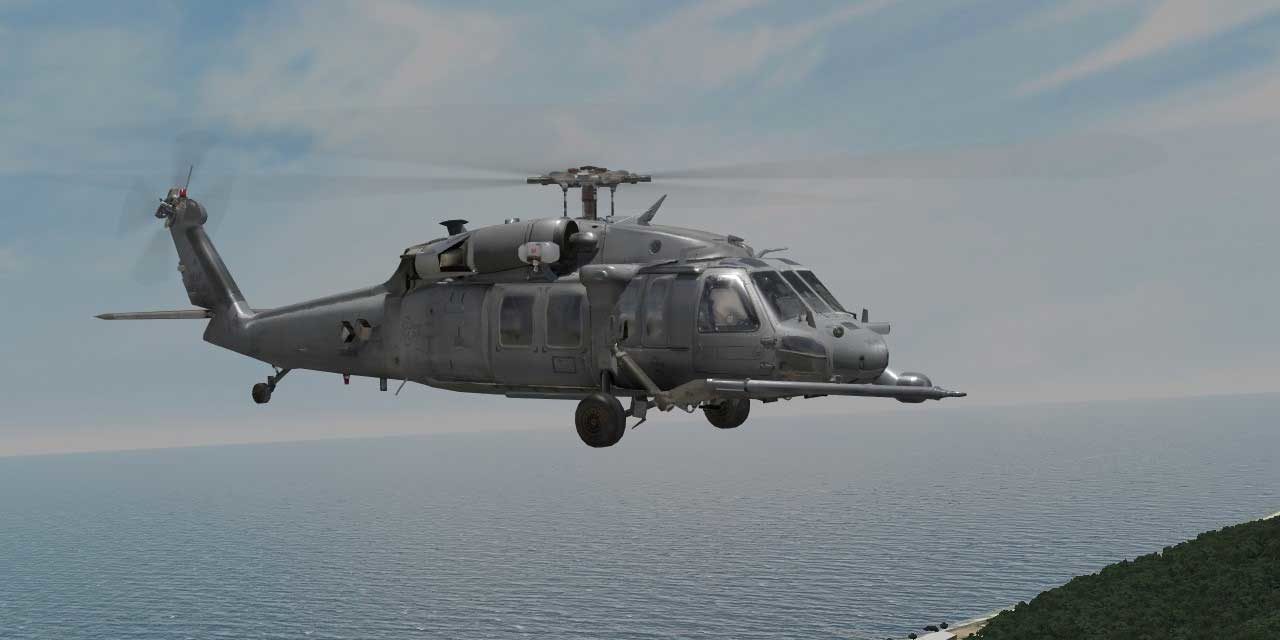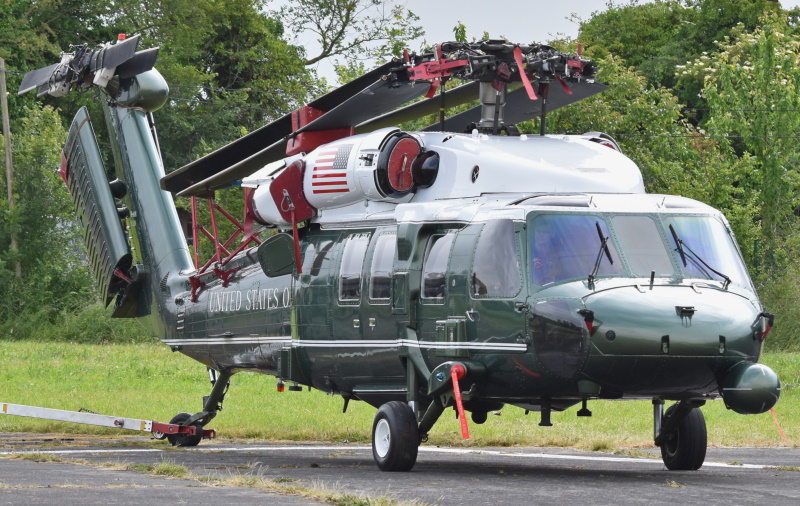A Check out the Sikorsky S 70's Role in Armed forces and Civil Aviation
A Check out the Sikorsky S 70's Role in Armed forces and Civil Aviation
Blog Article
Rotary-Wing Airplane Offering Superior Sturdiness and Accuracy Engineering
In the world of aeronautics, rotary-wing airplane have actually long been acknowledged for their distinct capabilities in various functional settings. From armed forces objectives to civilian applications, the advancement of rotary-wing technology has led the way for makers that use unrivaled longevity and precision design. Via innovations in products and construction strategies, paired with sophisticated trip control systems, these aircraft have ended up being important tools for jobs that require both toughness and precision. As we explore the detailed equilibrium in between innovation and reliability in rotary-wing aircraft, it comes to be noticeable that the convergence of sophisticated innovation and proven style principles has actually set a new criterion for performance and performance in the aerospace market.
Development of Rotary-Wing Innovation
Throughout the background of aviation, the evolution of rotary-wing innovation has been a testimony to constant advancement and development in aeronautical engineering. From the very early days of vertical trip with fundamental styles to the advanced helicopters and various other rotary-wing airplane of today, the progress in this area has been remarkable.
In the very early 1900s, pioneers like Igor Sikorsky and Juan de la Cierva made considerable strides in rotary-wing technology. Sikorsky's VS-300 helicopter, initial flown in 1939, noted a crucial moment in the development of practical rotary-wing airplane. This success led the way for further innovations in vertical flight capacities.

Today, rotary-wing airplane play vital functions in numerous sectors, consisting of military operations, emergency situation clinical services, police, and industrial transportation. The development of rotary-wing innovation remains to press the boundaries of what is feasible in upright flight, guaranteeing that these aircraft stay indispensable assets in the aeronautics industry.
Materials and Construction Innovations
Demonstrating a blend of cutting-edge products and precise building methods, rotary-wing airplane have actually undertaken considerable improvements in toughness and performance. One of the vital technologies in products made use of for rotary-wing airplane is the boosting usage of composite products. These products, such as carbon fiber reinforced polymers, supply a high strength-to-weight ratio, boosting both the structural integrity and general performance of the aircraft. Additionally, developments in manufacturing procedures have actually permitted even more detailed and specific building and construction of rotary-wing components, adding to enhanced the rules of aerodynamics and performance.
In addition, the assimilation of sophisticated coverings and surface area treatments has played a critical duty in enhancing the longevity of rotary-wing airplane. These coatings provide security against deterioration, abrasion, and severe weather, expanding the lifespan of the airplane and decreasing upkeep demands.
In regards to building developments, additive manufacturing, additionally referred to as 3D printing, has actually changed the production of facility elements for rotary-wing airplane. This innovation enables quick prototyping and modification, resulting in much faster growth cycles and decreased expenses. On the whole, the continuous advancement of products and building and construction strategies is driving the capacities and efficiency of rotary-wing airplane to new elevations.
Precision Trip Control Equipment

The assimilation of GPS technology better boosts the accuracy and reliability of these systems, allowing for precise navigating, waypoint monitoring, and automated trip control. sikorsky s 70. This level of accuracy not only enhances the safety of rotary-wing operations yet also boosts total operational effectiveness and objective efficiency
Additionally, the constant developments in artificial knowledge and device understanding have actually helped with the development of independent flight abilities within Precision Flight Control Solution. This makes it possible for rotary-wing airplane to do complicated goals with unparalleled accuracy and consistency, making them indispensable assets in a large range of applications, including military procedures, click to investigate search and rescue objectives, and airborne photography.
Resilience in Challenging Atmospheres
Popular operational setups, rotary-wing aircraft show extraordinary strength and robustness, making certain optimal efficiency under challenging environmental problems. These aircraft are designed to stand up to a wide array of ecological aspects, consisting of extreme temperatures, high winds, and harsh terrain, making them fit for various objectives in diverse landscapes.
One crucial element adding to the sturdiness of rotary-wing aircraft is their tough building and construction. These airplanes are built making use of top quality products and advanced engineering strategies to enhance their architectural honesty and dependability. In addition, parts such as rotor blades, engine systems, and landing gear are meticulously developed to hold up against the pressures and stress and anxieties encountered during procedures in challenging environments.
Moreover, rotary-wing airplane are outfitted with sophisticated onboard systems that keep track of performance metrics in real-time, enabling for aggressive maintenance and very early detection of potential issues - sikorsky s 70. This aggressive strategy aids prevent unanticipated failings and ensures the continued airworthiness of the aircraft popular functional setups. Generally, the resilience of rotary-wing airplane in difficult settings is a testimony to their superior engineering and design, making them important possessions for different mission-critical procedures
Upkeep and Dependability Requirements
The adherence to rigorous maintenance and integrity criteria is critical in ensuring the optimal performance and safety and security of rotary-wing airplane. Routine maintenance checks, carried out by qualified professionals, are important to identify and deal with any kind of potential issues prior to they compromise the airplane's capability. These checks encompass an extensive assessment of all important parts, including the engine, rotor system, avionics, and hydraulic systems, to assure that they are in prime functioning problem.
Additionally, adherence to set up upkeep intervals in conformity with producer guidelines is critical for upholding the aircraft's dependability. This aggressive technique aids avoid unexpected malfunctions and makes certain that the airplane remains airworthy for its designated goals. Additionally, the implementation of durable dependability criteria, such as regular element testing and replacement based on fixed lifecycles, additionally enhances the aircraft's reliability.
Conclusion

Finally, the developments in rotary-wing aircraft modern technology have caused superior sturdiness and accuracy engineering. With innovative products and building methods, in addition to accuracy trip control systems, these airplane can operate in difficult settings with increased dependability. The maintenance and dependability standards ensure that these rotary-wing aircraft remain to execute at their finest, making them crucial properties for different industries.
Demonstrating a combination of sophisticated materials and precise construction methods, rotary-wing airplane Full Report have undergone considerable improvements in longevity and performance. One of the vital technologies in products utilized for rotary-wing aircraft is the increasing utilization of composite materials.With careful interest to information and advanced technological integration, rotary-wing airplane have actually accepted Accuracy Flight Control Systems as a foundation of their operational excellence. Overall, the toughness of rotary-wing airplane in difficult atmospheres is a testimony to their premium engineering and design, making them indispensable properties for different mission-critical procedures.
In conclusion, the innovations in rotary-wing aircraft modern technology have led to superior try this longevity and precision design.
Report this page